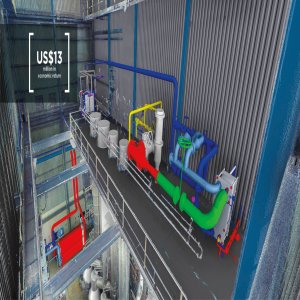Much Still to Be Done Toward Energy Efficiency

STORY INLINE POST
Q: What were CONUEE’s priorities during your administration?
A: CONUEE’s program with the greatest scope and impact is the one related to energy efficiency standards (NOM) and we worked to increase its reach and to strengthen the compliance system.
We have supported the development of energy-efficient lighting projects in more than 40 municipalities and we have contributed to the implementation of best practices following our NOM, giving more formality to a market where there is much improvisation. In terms of final use of energy, we have generated discussion among several players in the transportation, construction and industrial sectors in best practices and technology to improve energy performance. We also completed our National Energy Efficiency Monitoring Report in collaboration with the Economic Commission for Latin America and the Caribbean and the French Development Agency. This report helps the general public and policymakers understand the evolution and present levels of efficiency by sector in great detail. This is now the most complete report in all of Latin America addressing this topic.
Q: How have regulations advanced to promote energy efficiency in buildings?
A: There has not been much progress. As electricity in the housing sector is heavily subsidized, the greatest benefits of NOM-020 go to the Ministry of Finance. We have a proposal to economically support compliance with certain standards but this is a conversation that must be established with the new federal government. We also face challenging conditions due to the lack of interest from mayors and municipal leaders since energy-efficiency projects do not usually yield largely visible results. We have approached administrations in Mexico City, Villahermosa, Merida, Mexicali and Hermosillo, among others, but we have not succeeded in making energy efficiency a key element in local construction rulebooks.
Q: What were the main conclusions reached through the National Energy Efficiency Monitoring Report?
A: We found that electric energy intensity in the industrial sector has decreased by 15 percent over the past 20 years. This is mostly a result of high energy and gas tariffs rather than government policies. In the residential sector, on the other hand, public policies have had a significant impact with an estimated 45 percent reduction in electric energy intensity and a decrease of 20 percent in energy use per capita. The analysis covers the entire value chain of the energy sector, highlighting opportunities in supply as well. PEMEX’s drop in efficiency has also impacted national indicators, which shows a need to improve processes for fossil fuels.
Q: What pending priorities should the new administration focus on?
A: We are still missing an energy efficiency standard for heavy vehicles. We already have one for light vehicles but CONUEE must still work together with SEMARNAT to draft its heavy-vehicle counterpart. There is also a gap in the implementation of norms NOM-008 for nonresidential buildings and NOM-020 for residential buildings in the construction sector, which should be a requirement in the permit process at a municipal level.
The SME sector also represents an area of opportunity. Promotion and financing among these players are not simple and our strategies should be rethought to make them more effective. There is also a change needed in the mindset of public officers at a municipal level, so they are more knowledgeable regarding energy projects and the best way to implement these.
Going forward, support for CONUEE should continue and there should be ongoing innovation in support toward SMEs and municipal projects. There should also be stronger collaboration with the environmental sector to ensure healthy progress toward national goals.
























